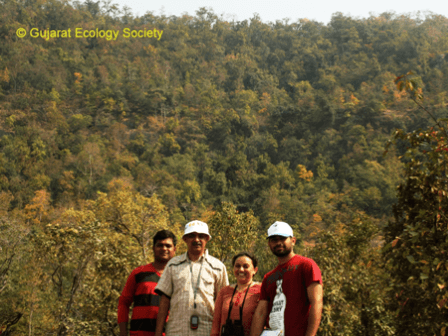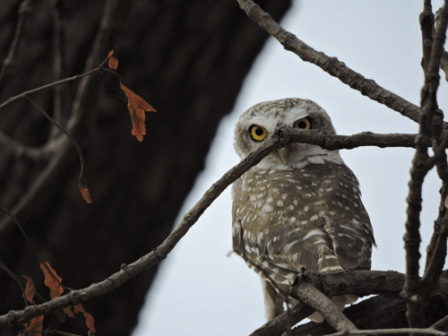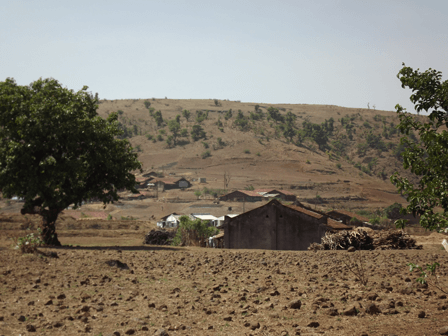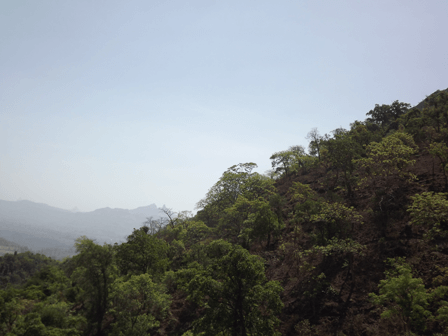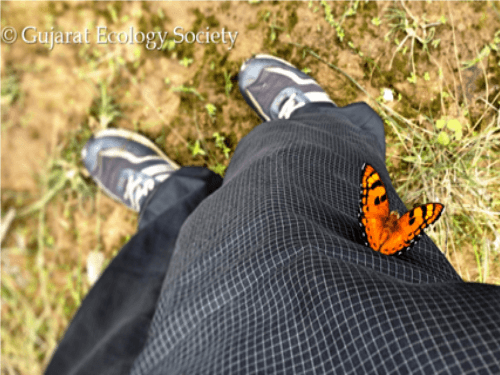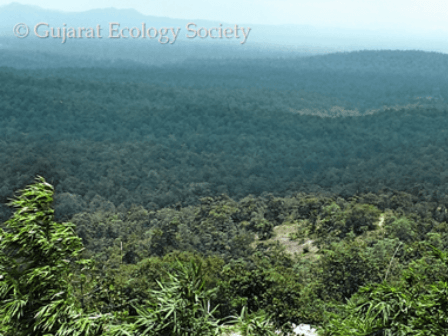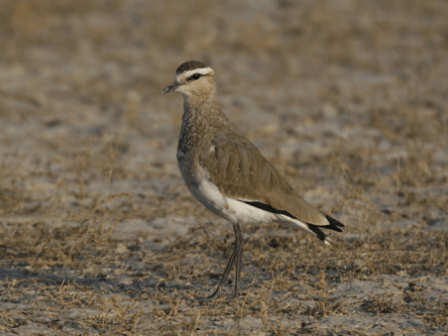
Our Achievement
1. Conservation of Rare & Endangered Biodiversity in Gujarat (1999-2000) – Sponsored by Gujarat Ecology Commission
- Considering the need to initiate immediate action for the conservation of rare and endangered species to save them from becoming extinct, a four-year programme on the Conservation of Rare and Endangered Biodiversity of Gujarat has been taken up with the support of the Gujarat Ecology Commission. Documentation of the current status of the rare and endangered species, preparation of the conservation and management plans, and undertaking some pilot conservation measures are the significant milestones of the project.
2. State Environment Action Programme – Biodiversity Conservation (1999 – 2002)- Sponsored by World Bank through GEC
- Biodiversity Conservation Action Plan for Gujarat is being prepared with the support of the World Bank. The two-year program aims to formulation of a comprehensive policy framework, covering aspects of ecological security and environmental protection, for ensuring sustainability of natural resource productivity.
3. Human-Wildlife Conflict in Central Gujarat (2003-04)- Self-funded
- Gujarat Ecology Society carried out a study on human-wildlife conflicts in Jambughoda Wildlife Sanctuary (WLS) and Ratanmahal Wildlife Sanctuary (WLS) in central Gujarat. The findings of the study indicate higher cases of livestock depredation by leopards, around Jambughoda WLS. On the other hand, the cases of attacks on humans were more around Ratanmahal WLS. Attacks on livestock were more during summer and monsoon in both the wildlife sanctuaries. Crop damage by nilgai was reported only from Jambughoda WLS.
4. Monitoring of National Afforestation Programme in Devgadhbaria Forest Division by Dahod Forest Development Agency (2004-05)- Sponsored by Gujarat State Forest Department
5. Herbaceous vegetation and its response towards industrial pollution (2005-06) – Sponsored by the Department of Science and Technology
- The study is a preliminary survey highlighting the present state of the environment and the views of the locals and farmers. The land-holding farmers whose lands were purchased are not satisfied with the land deal procurement by the State government. The number of BPL families at Manjusar village increased from 301 in (1996-97) to 496 in 2007 – 08. Due to the land conversion and leveling activity, the loss of local trees was observed.
6. To find out the occurrence, distribution, and status of small and certain rare species of mammals (2006-2007) – Sponsored by Gujarat Forest Research Institute
- The present study was undertaken in Central Gujarat excluding certain forest ranges of Chottaudepur and Baria divisions. During the two-year survey, a total of 13 small species were recorded in the field survey representing 7 families. Species like Rusty-spotted cats, Smooth Indian Otters, long-eared hedgehogs, and giant flying squirrels were recorded from new locations during the study. The human-wildlife conflict was a problem associated with small Indian civets and porcupines. Most of our sightings were outside the protected area, and strategies were identified for conservation action. The study showed five important areas within central Gujarat, that support a good population of small mammals.
7. Evaluation of teak stands from the seed production area and cloned plus trees supported (2008)- Sponsored by Gujarat Forest Research Institute, Gandhinagar
8. Evaluation of teak production and stands in Dahod and Dangs Forest ranges (2008)- Sponsored by Rajpipla Silva Division, Gujarat State Forest Department
9. Evaluating the health of the environment in and around the GSFC plant, Vadodara (2010) – Sponsored by GSFC, Vadodara
- GES undertook a study to evaluate the state of the environment around the GSFC plant. To record biodiversity (flora and fauna) present around a 5 Km radius of the GSFC plant including its premises. And to evaluate the ecology of wetlands in and around GSFC plants concerning atmospheric deposition. The study indicates a positive impact of the improvement of technology and plantation activity on the environment of the region.
10. Tracking the sociable lapwing: Conservation beyond the breeding grounds (2004, 2009-10, 2010-11, 2011-12, 2012-13, 2012-13, 6 times)- Sponsored by BNHS, The Mohamed bin Zayed Species Conservation Fund, UAE
- The project is in continuation to the monitoring process by RSPB of endangered Sociable lapwing (Vanellous gregarious) that comes to Gujarat for wintering. The previous survey done by GES was in 2004 and birds were sighted for the first time in new locations from N Gujarat. The later studies identified habitats in North Gujarat and Kachchh. The area was surveyed for the recording of the number of birds wintering in Gujarat. Around 33 birds were sighted in the Banni area near Nakhatrana in the late winter season.
11. Formation of Biodiversity People’s register for Vadodara District 10 villages (2012-13) – Sponsored by Gujarat State Biodiversity Board, Gandhinagar
- Funded by the Gujarat Biodiversity Board and as leading technical support for Vadodara, GES has assisted in constituting BMCs in 300 Gram Panchayats in Vadodara district to date. GES also imparted training on the National Biodiversity Act and its importance.
12. Ecological profiling of the coastal talukas of Gulf of Kachchh in association with FES, Anand and MIR Consultant, Cochins (2013)- Sponsored by GEC, Gandhinagar
- The project created a Talukawise profile of 14 Talukas surrounding the Gulf of Kachchh, belonging to Kachchh, Jamnagar, Morvi, and Devbhumi Dwarka Districts. Highlighting their biodiversity, land use, socioeconomics, and industrial development. The study highlighted environmental challenges and hotspot areas that requires immediate challenges.
13. Formation of Biodiversity People’s register for Vadodara District (2014) – 25 villages- Sponsored by Gujarat State Biodiversity Board, Gandhinagar
- GES provided technical support to the Gujarat Biodiversity Board for preparing the People’s Biodiversity Register (PBR) for 25-gram panchayats and reported 410 plants (inclusive crop species) and 156 animal species. Traditional knowledge associated with each species has also been documented.
14. Vegetation dynamics in Banni grasslands under the influence of changing climate (2015) -Sponsored by RAMBLE- Indrajit Thakor Fund Banni Bhuj
- The study highlighted the changes in vegetation dynamics especially the herbaceous layer with the climate along the Banni grassland, a special ecosystem along Kachchh. The project was funded by Thakar Jaikrishna Indrajit Research Grant
15. Formation of BMC and PBR for wetlands under the UNEP GEF project (2015) – Sponsored by Gujarat State Biodiversity Board, Gandhinagar
- Funded by UNEP-GEF, the project generated awareness about the wetland, its importance, and conservation. The Biodiversity Management Committee (BMC) was formed in 15 wetlands within the Vadodara district and the locals were empowered. GES also formulated and implemented a successful ABS model for the wetlands of Baroda which could be easily replicated elsewhere.
16. Biodiversity Assessment and Development of Biodiversity Management Plan (2014-15) – Sponsored by Bharat Aluminum Company Ltd. (BALCO)
- The project assessed the floral and faunal diversity along Korba, Mainpat, and Kanwardha mining sites. The project also evaluated the local livelihood dependency on forests. A biodiversity conservation plan for mining sites and the Korba region was given (2014-15). A strategy for the improvement of livelihood through mushroom cultivation was suggested (2016-2017).
17. Training of DCF -Dangs (2015-16) – Sponsored by Gujarat State Forest Department
- Training of DCF of Dangs was given covering aspects like Ecological Survey of forest flora and fauna.
18. Preparation of Biodiversity Heritage Site document for Mango Forest, Chinchali, Dangs (2014-15) – Sponsored by Gujarat State Biodiversity Board, Gandhinagar
- The study reported the presence of more than 2500 wild mango trees, 67 tree species, and 89 herb species from the area. DNA profiling indicated the presence of a distinct genetic composition of the wild mango, which was inherently different from the cultivated trees.
19. Consultancy services for “Preparation of Ecological Profile for 8 Talukas” (2015) – Sponsored by GEC, Gandhinagar
- The study created an ecological databank for 8 talukas by analyzing ecological dynamics over three decades. Individual reports and management plans for each taluka were prepared using GIS with an emphasis on biodiversity hot spots. The breakthrough findings included the sighting of the threatened Smooth Indian Otter in the Purna river and the presence of a coral colony near Porbandar on the open Saurashtra coast.
20. Status survey of Smooth-coated Otter (2017-18)- Self-funded
- The vulnerable species under IUCN has been first reported across south Gujarat by GES. The study raised awareness about Otter conservation among the locals as a preventive measure for their illegal poaching and hunting. The project constituted a local informer network for intelligence gathering, strengthened the frontline staff of the Bharuch Forest department for Otter conservation, and successfully seized Snares and traps before Otters got trapped.
21. Socio-economic and ecological impact of wood-based industries in Nadiad and Anand districts (2017-18) – Sponsored by GFRI, Gandhinagar
- GES studied the opportunity to improve the rural economy and environment along Nadiad and Anand based on Agro-forestry. PRA with local farmers revealed farm forestry has led to an increase in their annual income especially in areas where baval, ambo, gorasamli were dominant species.
22. Awareness Programme for Wetland Conservation within Vadodara City (2018-19) – Sponsored by United Way of Baroda
- The project aimed at continued efforts toward wetland conservation around Vadodara by GES. The project aimed at sanitizing higher secondary school students about wetland importance, and the need for their conservation and giving them hands-on experience by various plantation activities on the edges of wetlands.
23. Human leopard conflict in Surat Forest Division- Sponsored by Gujarat State Forest Department
- The study aimed to find reasons for constant human-leopard conflicts in the Surat district and came out with recommendations for the same. The finding highlighted that leopards used the river and riverine systems as corridors for their movement. As most of the cattle predation cases were reported in the areas close to the riverine systems the riverine forest provided congenial space for hiding favoring leopards to use this corridor for survival.
24. Ecology and Population of Houbara Bustard (Chlamydotis macqueenii) in Banni Grass Land (2019) – Sponsored by RAMBLE, Shahjeevan, Bhuj
- GES studied Houbara Bustard habitats along Banni grassland including it’s roosting site, migration pattern, and GIS mapping of the habitat.
25. Preparation of State Environmental Atlas (2019) – Sponsored by GEC, Gandhinagar
- The project aimed at documenting the spatio-temporal variability of 118 variables spread across 33 districts of Gujarat using GIS as a platform. The results from the atlas proved handy for the policy and decision makers while working out on the management issues to understand the dynamics of the changes taking place in different sectors.
26. Mitigation of illegal hunting and poaching of Smooth-coated Otter in selected villages of Bharuch District – Gujarat (2019) – Sponsored by WTI, NewDelhi
27. Value Addition of Medicinal Plants Training Programme (20 Villages of Vadodara Dist.) (2019)- Sponsored by Gujarat State Medicinal Plants Board, Gandhinagar
- The project aimed to generate more awareness about the medicinal plants and their therapeutic use, found in the vicinity. Self-help women groups in 16 villages of Vadodara were formed where 900 women came together to learn the skills of livelihood generation using medicinal plants.
28. Herbal home garden for households in Vadodara city (2019) – Sponsored by Gujarat State Medicinal Plants Board, Gandhinagar
- The project helped mainstream the use of medicinal plants in the home using the home herbal garden. The initiative was commendable, especially during the COVID-19 pandemic time.
29. Preparation of Biodiversity Management Committee in Vadodara District (2020)- Sponsored by Gujarat Biodiversity Board, Gandhinagar
- GBB has got mandate of formation of BM under the Biodiversity Act 2000. GES acted as one of the Technical Service Groups for Vadodara District assisting GBB in formation and training of BMCs at the village level.
30. Livelihood enhancement of selected rural women through value addition of medicinal plants in Gujarat (2021) – Sponsored by Deaprtement of Scene and Technology -SEED
- The project helped mainstream the use of medicinal plants in villages applying value-addition techniques to medicinal plants.
31. State of Environment for Gujarat- Coastal and Marine sub-component (2021) – Sponsored by GEC through Gujarat Institute of Desert Ecology
- SOE is a regular publication of GEC assessing the State of Environment of Gujarat covering various aspects of the State Environment. GES worked on a chapter on costal and marine environments.
32. Ecological Profile of Ten Taluka of Banaskantha and Sabarkantha (2023) – Sponsored by Gujarat Ecology Commission
- The study created an ecological databank for the talukas by analyzing ecological status through field surveys, agriculture and industrial development using GIS. Biodiversity hot spots were identified for the conservation plan.

